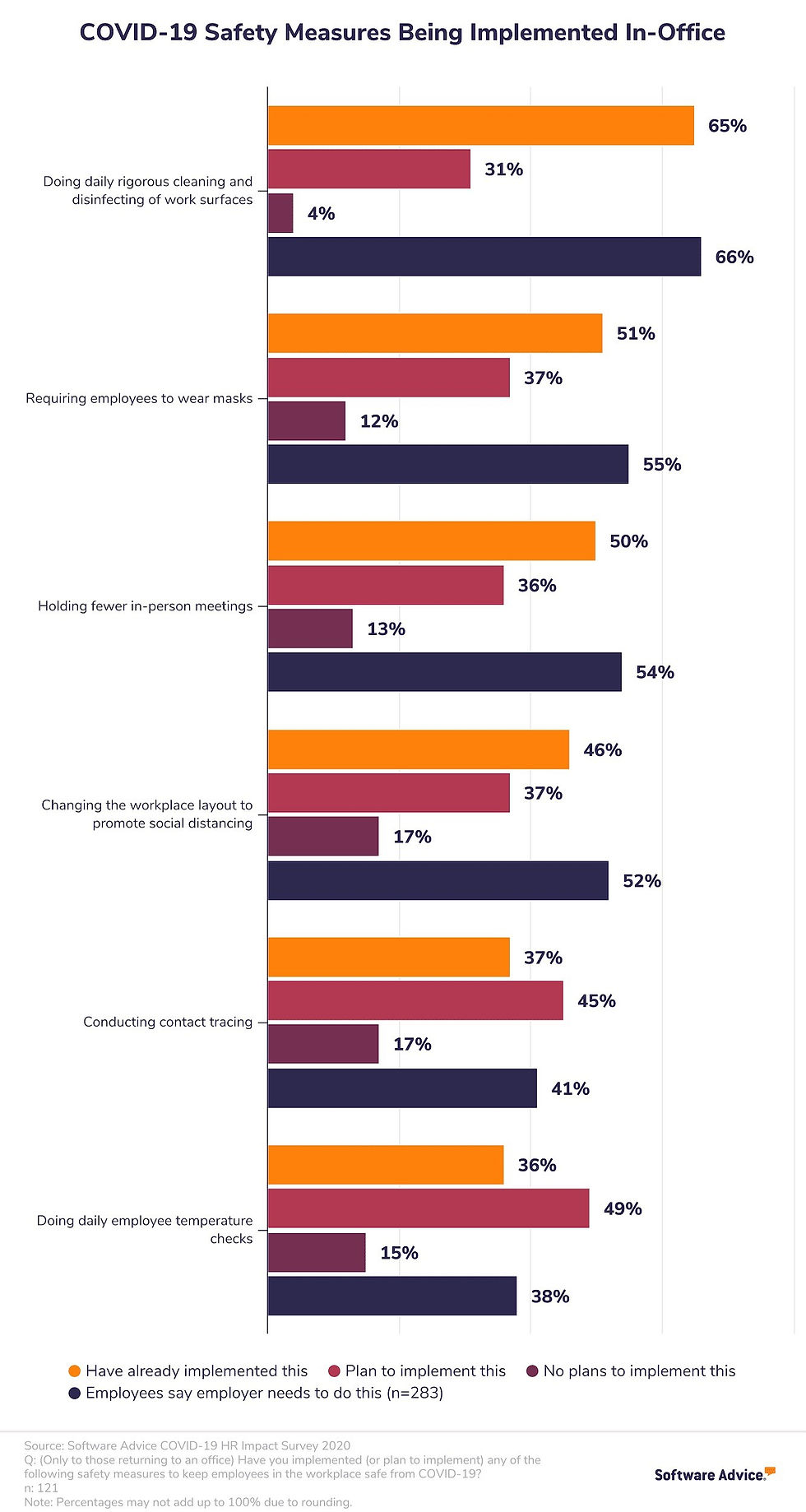Return-To-Work Strategies: How HR Is Answering the Impossible Question
- employersadvantage
- Sep 30, 2020
- 3 min read
Updated: Mar 18, 2021
Our owner, Deanna Baumgardner, was featured in this article about returning to work after COVID. This post is a summarized version utilizing the charts and graphics from the original article.
When can workers expect to return to work?
Many companies have sent their employees to work from home during the coronavirus pandemic to protect themselves and each other. Now that things are somewhat under control, employees are wondering when it is appropriate and safe for them to return to the office.
A lot of questions are being asked about this topic. How do companies determine who comes back and who stays home? What will be the protocol if someone tests positive?
These are issues that HR leaders are having to address and think through. HR leaders from around the country were interviewed about their plans for reopening.
When should we return to work?
More than 25% of HR professionals don't have a set timeline for returning to work. There are several factors that affect when employers will be choosing to return to work, such as when they are allowed to open, potential vaccines, government guidance, etc.

Employee surveys show that 89% of people working from home don't feel comfortable returning to an office setting just yet.
Deanna Baumgardner, owner of Employers Advantage LLC, has been giving small businesses advice on returning to work: "You have to make sure you're incorporating comfort and safety for them when they return to the office. Otherwise, they're going to be sitting there, anxiety-riddled, wondering if they can move from their desk."
Continually monitoring the COVID situation in your area and doing hazard assessments of your work place are good practices to put in place while considering a return to work date.
Who should return to work?
Employers are giving their workers the option to come back to the office or continue to work from home.

Allowing employees to make the decision whether they return to the office or not gives them the opportunity to work in an environment they feel most comfortable in. Work life balance has been reported to be better while working from home, while other factors like productivity have decreased.

Baumgardner also offers three more options for employees that she has used with her own clients:
"Allowing employees to come in at night. There might be some people that prefer to work in the evenings, so they can take care of homeschooling during the day.
Staggering which days employees come in. We have seen some clients make A and B shifts. Group A comes in on Mondays and Wednesdays and Group B comes in on Tuesdays and Thursdays, so they’re still getting some of that collaboration and direction, but it’s limiting the number of folks in the office at one time.
Splitting work between in-office and at home. Employees are really pushing for more of a hybrid approach. We’re working with our clients to accommodate those who want some flexibility and don’t want to be in the office all of the time."
How can I keep the workplace safe?
When asked what would make them feel safer, employees responded with the following:
Daily cleaning and disinfecting
Require employees to wear masks
Hold fewer in person meetings
Change the workplace layout for social distancing

What should we do if an employee tests positive for COVID?
Most HR leaders have a plan in place in case of an outbreak, but one in five reported that they do not have a plan.

Contact tracing is also being used to identify those who may have been exposed to the virus.

Some are relying on HR software to track this information, and some are relying on paper files or other software. Many systems have added contact tracing to their software so that businesses don't have to move to a new system.
So how do we move forward with returning to work?
“It’s really about what the employees will respond to, what the culture is of that organization, and what makes the most sense,” Baumgardner says. “Are you forcing people into an office just because that’s the way it was before? Or are you bringing people in because it benefits the organization in some way?”
Things are changing. Contact Employers Advantage today if you have questions or want to learn more.


If you’ve ever been denied a job or housing because of a background check, you need to know about the FCRA — that’s the Fair Credit Reporting Act. It gives you rights to see what’s on your report and to fight anything that’s wrong or outdated. I had an old charge show up that was supposed to be sealed, and I wouldn’t have known I could dispute it if it weren’t for the FCRA. This guide helped me a ton: https://consumerattorneys.com/article/fcra-background-check. It explains what companies can and can’t do, how to request your report, and what steps to take if there’s something fishy on it. If you’re dealing with a background check issue, don’t just accept it — you’ve got…
The shift in workplace dynamics is a tricky issue, especially as companies are balancing flexibility and productivity. As someone preparing for front end interview preparation, I can see how HR strategies can play a role in creating a work environment that is both inclusive and adaptive to change. It’s critical that organizations recognize the importance of accommodating diverse work preferences and provide tools to help employees succeed, whether working remotely or in the office. This approach is key to building a resilient, motivated workforce.